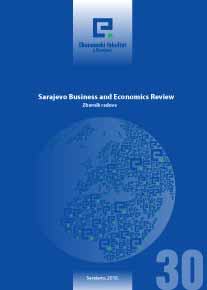Kako reorganizovati stečajnog dužnika bez imovine?
How to Reorganize the Bankruptcy Debtor who is Without Property?
Author(s): Fatima Mahmutćahajić, Vedad Silajdžić, Veljko TrivunSubject(s): Economy
Published by: Ekonomski fakultet u Sarajevu
Keywords: Bankruptcy; Bankruptcy proceedings; Reorganization - Bankruptcy plan; Bankruptcy debtor; Bankruptcy creditor
Summary/Abstract: With the opening of bankruptcy proceedings, the bankruptcy raises the basic question: What is the best way of satisfying the creditors - without delay, through the liquidation of debtor's assets and the division of revenue generated by selling the asset or reorganization of the debtor's solvency? Developed bankruptcy systems inevitably prove to creditors, that in appropriate cases, creditors will achieve better settlement of their claims through the gradual settlement of the confirmed plan of reorganization, particularly with regard to economic practices and case law that liquidation debtor's property with undefined duration of the term, may significantly reduce the bankruptcy estate because of administrative costs associated with this procedure. The plan of reorganization can be viewed as a map that shows the way towards the rehabilitation of the debtor. Together with financial and other relevant data, the reorganization plan is comprehensive document, carefully tailored to the needs and special characteristics of certain debtor, which indicates all the operational, structural and legal measures to be taken. This is a very flexible instrument with the help of which the debtor may recover, redefining its business relations with all its creditors. The answer to questions, whether it is possible to successfully reorganize the debtor without enough attractive property? Although the answer mostly depends on the creditors themselves as well as on their commercial potential risk assessment and acceptance of the plan, we can say that the answer can be positive, and it can be made through the business model of proposed modification of existing commercial agreements with creditors, in the domain of the core business of the debtor.
Journal: Zbornik radova - Sarajevo Business and Economics Review (SBER)
- Issue Year: 2010
- Issue No: 30
- Page Range: 556-571
- Page Count: 16
- Language: Bosnian

